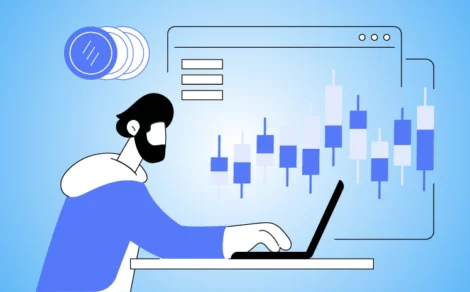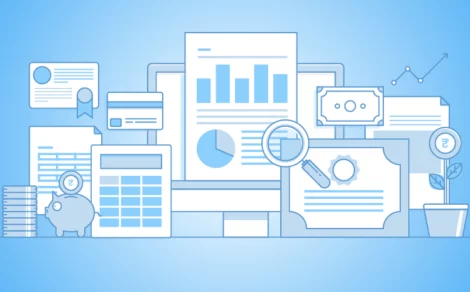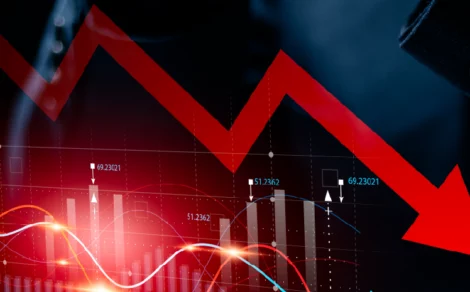Not exactly. QE involves purchasing assets, unlike printing cash. The aim is to increase liquidity and influence interest rates without introducing cash directly into consumer hands.
Toruscope » Investment Guide » Understanding Quantitative Easing and Its Impact
When economic growth begins to stall, central banks play an essential role in steering the economy back on track. In normal times, they adjust interest rates to influence borrowing and spending. However, when those measures fall short, especially during deeper slowdowns, they may turn to broader and less conventional strategies to keep the economy moving. One such strategy is quantitative easing.
In this blog, we unpack quantitative easing meaning, how it works in the real world, and the risks and rewards it brings along.
What Is Quantitative Easing?
Quantitative easing (QE) is a non-traditional monetary policy tool used by central banks to promote economic activity when conventional methods, such as adjusting interest rates, become ineffective. It involves the large-scale purchase of financial assets, typically government bonds, from the open market to inject liquidity into the economy.
This strategy is generally adopted during economic downturns or when inflation is too low and interest rates are already near zero. QE encourages lending, spending, and investment, thereby boosting economic growth.
How Does Quantitative Easing Work?
The country’s central banks initiate quantitative easing by purchasing government securities from the open markets and, in some cases, other financial assets, such as corporate bonds or mortgage-backed securities.
Here is the step-by-step breakdown of the QE process:
- The central bank buys long-term securities from commercial banks and financial institutions.
- This increases the reserves of these banks, providing them with more liquidity.
- Banks are encouraged to lend more to businesses and consumers with more funds available.
- This increased lending fuels spending and investment.
How Is Quantitative Easing Used?
Quantitative easing has been used globally during periods of financial crisis or persistent economic stagnation.
Some notable quantitative easing examples include:
- The US Federal Reserve implemented QE after the financial crisis of 2008 and again during the COVID-19 pandemic in 2020.
- The European Central Bank and the Bank of Japan have adopted similar policies in response to deflationary pressures and economic recessions.
- In India, the RBI undertook similar liquidity measures during the pandemic, although not labelled explicitly as QE.
Central banks use QE to lower borrowing costs and signal their commitment to supporting the economy. This can boost investor confidence and stabilise financial markets.
Pros and Cons of Quantitative Easing
Quantitative easing has shown mixed results, with both advantages and disadvantages, depending on the economic situation:
Pros
- Stimulates Economic Growth: QE encourages borrowing and spending by increasing liquidity in the market.
- Prevents Deflation: QE helps maintain price stability during times of economic contraction.
- Boosts Asset Prices: Financial markets often respond positively to QE, as it increases demand for equities and bonds.
- Supports Government Spending: Lower bond yields reduce borrowing costs for governments, allowing more fiscal flexibility.
Cons
- Inflation Risk: Injecting too many monetary resources into the economy can lead to higher inflation.
- Asset Bubbles: Excess liquidity may inflate real estate or stock market prices beyond fundamental values.
- Weaker Currency: QE often leads to increased import costs as currency depreciates.
- Inequality: It may widen the income gap as the major benefits of QE are realised by asset owners.
Drawbacks of Quantitative Easing
While QE can be a powerful tool in the short term, it is not without its limitations and risks when used over extended periods.
- Diminishing Returns: Over time, QE may lose its effectiveness as markets become saturated with liquidity.
- Excessive Risk-Taking: Prolonged low interest rates can encourage investors to take on more risk in search of returns.
- Distortion of Financial Markets: Artificially suppressed interest rates can distort the true cost of capital, leading to inefficient resource allocation.
- Dependency on Central Banks: Economies may become overly reliant on central bank intervention and avoid implementing structural reforms.
Conclusion
Quantitative easing is a critical tool in the arsenal of modern central banks, used to counteract severe economic downturns and restore market confidence. While it has proven effective in staving off deflation and reviving growth during crises, it is not a one-size-fits-all solution. Its benefits must be weighed against potential long-term consequences like inflation, asset bubbles, and financial instability.
Kick-start your investment journey with Torus Digital. Open your free demat account today!
Frequently Asked Questions
Imagine the central bank wants to boost the economy. It creates ₹1,000 crore digitally and buys government bonds from commercial banks, which gives them extra funds to lend to businesses and consumers. This increases spending and helps the economy grow.
Typically, those who own financial assets, like stocks and bonds, benefit the most, as asset prices tend to rise due to increased liquidity. Businesses also gain from lower borrowing costs, while consumers may benefit from easier access to credit.
Quantitative easing adds liquidity to the financial system by buying assets, while quantitative tightening does the opposite. In QT, central banks sell previously acquired assets or allow them to mature without reinvestment, reducing the amount of liquidity and increasing interest rates.
Related Reads
Free Cash Flow (FCF) Explained
When evaluating any business, one practical question stands out: how much cash does the...
By: torus
- 5 mins
- 04.Aug.2025
- 0(0)
- 47
Fair Value Gap (FVG): A Trader’s Guide to Market Inefficiencies
In the world of technical analysis, chart patterns, and price action strategies, traders often...
By: torus
- 8 mins
- 30.May.2025
- 0(0)
- 305
What is Dissaving? | Definition, Causes & Examples
Financial planning isn’t just about saving, but it’s also about managing how and when...
By: torus
- 7 mins
- 30.May.2025
- 0(0)
- 122
Your Step-by-Step Guide to Becoming Debt-Free
Debt can be overwhelming, especially when it starts to feel like you’re just working...
By: torus
- 5 mins
- 30.May.2025
- 0(0)
- 98
What Are G-Secs? A Beginner’s Guide to Understanding How Its Working
Ever wondered what “G-Secs” are that your financial advisor keeps mentioning? Short for Government...
By: torus
- 7 mins
- 30.May.2025
- 0(0)
- 119
The Impact of Inflation on Your Investment Returns
While your investment statements may show positive growth, the true value of your returns...
By: torus
- 6 mins
- 26.May.2025
- 0(0)
- 171
Disclaimer: The content provided in this blog is for informational purposes only and does not constitute financial advice or recommendations. The content may be subject to change and revision. Readers are encouraged to conduct their own research and consult with a qualified financial advisor before making any investment decisions. Torus Digital and its affiliates takes no guarantees whatsoever as to its completeness, correctness or accuracy since these details may be acquired from third party and we will not be responsible for any direct or indirect losses or liabilities incurred from actions taken based on the information provided herein. For more details, please visit www.torusdigital.com.
Tenneco Clean Air IPO Listing: Strong Market Debut with 27% Premium
Tenneco Clean Air India Ltd made a confident entrance into the public markets on...
By: torus
- 5 mins
- 19.Nov.2025
-
3.7(6)
-
105
Stock to Buy Today: November 19, 2025
The Indian stock market witnessed a mild decline on November 18, 2025, ending a...
By: torus
- 4 mins
- 19.Nov.2025
-
4.3(3)
-
105
Mirae Asset Infrastructure Fund NFO: A Sector-Focused Bet on India’s Growth
Mirae Asset Mutual Fund has launched a new equity scheme — Mirae Asset Infrastructure...
By: torus
- 4 mins
- 18.Nov.2025
-
4.3(6)
-
105
Emmvee Photovoltaic IPO: Shares Make Muted Market Debut, List Flat At ₹217
Emmvee Photovoltaic Power made a muted debut on 18 November 2025, listing flat at...
By: torus
- 3 mins
- 18.Nov.2025
-
3.7(6)
-
105







